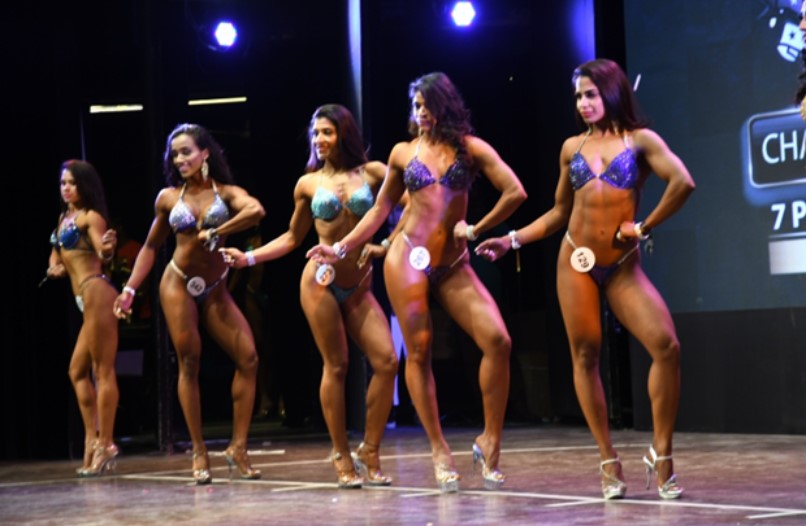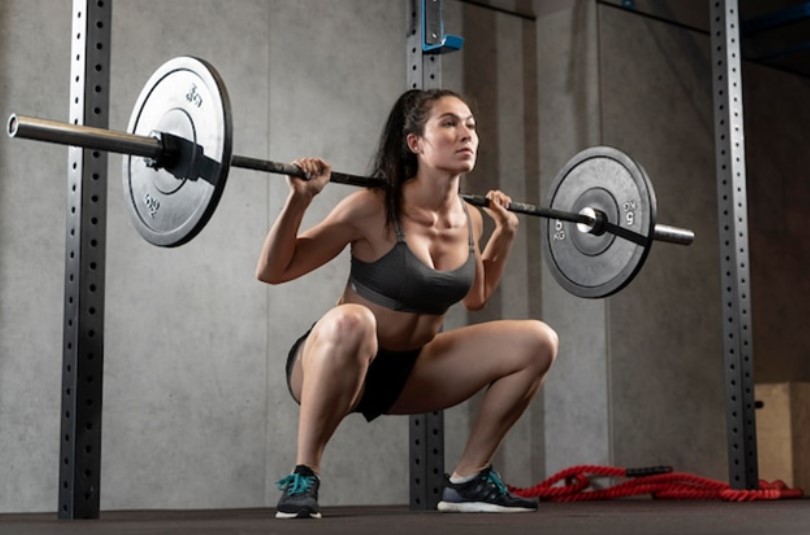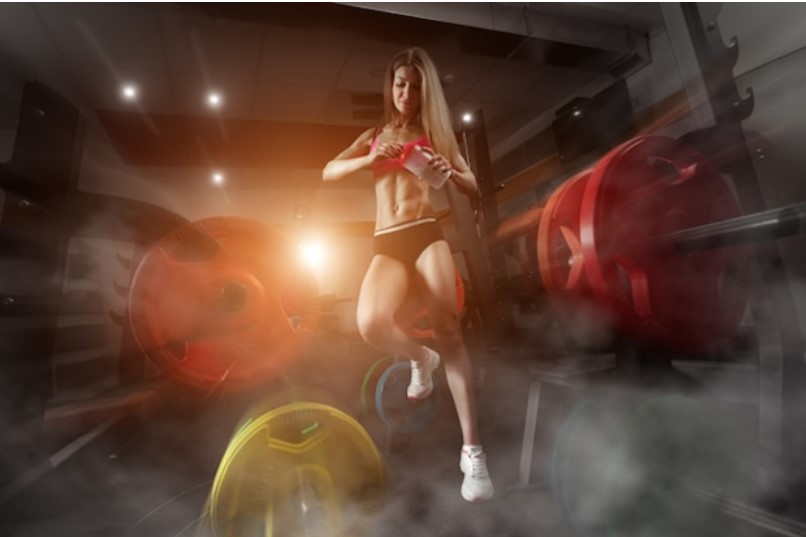Understanding the Basics of Bodybuilding for Women
Bodybuilding for women follows many of the same principles as bodybuilding for men, but there are some key differences in terms of training, nutrition, and goals. Here’s an overview of the basics of bodybuilding for women:1
Set Clear Goals: Before starting any bodybuilding program, it’s important to set clear goals. These could include building muscle, increasing strength, improving overall fitness, or participating in competitions. Defining your goals will help you tailor your training and nutrition plan accordingly.
2
Resistance Training: Bodybuilding for women involves regular resistance training to build muscle and strength. This typically involves lifting weights or using resistance machines. Aim for a well-rounded program that targets all major muscle groups, including exercises for the chest, back, shoulders, arms, legs, and core. Start with lighter weights and gradually increase the intensity over time to avoid injury.
3
Progressive Overload: To make progress in bodybuilding, it’s essential to incorporate progressive overload into your training. This means gradually increasing the demands on your muscles by either lifting heavier weights, increasing the number of repetitions, or reducing rest periods between sets. This helps to continually challenge your muscles and stimulate growth.
4
Cardiovascular Exercise: While resistance training is crucial for building muscle, cardiovascular exercise is also important for overall fitness and weight management. Incorporate regular cardio sessions into your routine, such as running, cycling, swimming, or using cardio machines. The duration and intensity of cardio workouts can vary depending on your goals.
5
Nutrition and Diet: Proper nutrition is essential for bodybuilding success. Ensure you consume a well-balanced diet that includes lean protein sources (chicken, fish, tofu, legumes), complex carbohydrates (whole grains, fruits, vegetables), healthy fats (avocado, nuts, olive oil), and plenty of water. Aim to eat smaller, frequent meals throughout the day to support muscle growth and provide sustained energy.
6
Caloric Surplus or Deficit: Your caloric intake should align with your goals. To build muscle, you’ll generally need to consume a slight caloric surplus, meaning you’re consuming more calories than you’re burning. This provides the extra energy needed for muscle growth. On the other hand, if your goal is to lose body fat and get lean, you’ll need to create a caloric deficit by consuming fewer calories than you’re burning.
7
Rest and Recovery: Rest and recovery are crucial for allowing your muscles to repair and grow. Make sure to include rest days in your training program and get enough sleep each night. Aim for 7-9 hours of quality sleep to support muscle recovery and overall well-being.
8
Consistency and Patience: Bodybuilding is a long-term endeavor, and it requires consistency and patience. Results won’t happen overnight, so stay committed to your training and nutrition plan. Track your progress and make adjustments as needed, but avoid getting discouraged by short-term setbacks.
9
Seek Professional Guidance: If you’re new to bodybuilding or want to optimize your progress, consider seeking guidance from a certified personal trainer or fitness professional with experience in training women. They can provide personalized advice, help with proper form, and tailor a program that suits your specific needs.
Remember that every individual is unique, and what works for one person may not work the same way for another. Experiment, listen to your body, and make adjustments as needed to find the approach that works best for you.

The Science of Muscle Growth
Muscle growth is a complex process that involves more than just lifting weights. Resistance training, such as weightlifting, is essential for building muscle mass, but it’s not the only factor. Protein consumption is crucial for muscle repair and growth, and recovery time is important for allowing muscles to repair and grow. Progressive overload, the gradual increase of weight or resistance used in exercises, is key to continued muscle growth. This means that you should be consistently challenging yourself in your workouts to see results. By understanding the science behind muscle growth, you can optimize your bodybuilding journey and achieve your goals.
Nutrition for Female Bodybuilders
- Macro and Micro Nutrients for Muscle Growth
Nutrition is a crucial component of bodybuilding, and understanding the role of macro and micronutrients is essential for muscle growth. Protein is the most crucial macronutrient for building muscles as it aids in recovery and repair. However, carbohydrates are also important as they provide energy during workouts and replenish glycogen stores post-exercise. Fats play a vital role in hormone regulation and can provide sustained energy for extended periods. In addition to macronutrients, micronutrients such as vitamins and minerals are also essential for overall health and muscle recovery.
- Essential Female Bodybuilding Supplements
Introducing essential supplements to your bodybuilding routine can help you achieve your fitness goals more efficiently. Female bodybuilders can benefit from protein powder, creatine, and BCAAs because they are designed to support muscle growth and recovery.
Protein powder contains essential amino acids needed for muscle repair and growth, while creatine helps boost strength and endurance during workouts. BCAAs can help reduce muscle soreness and improve recovery time.
However, before adding any supplement to your diet plan, consult with a healthcare professional to ensure they are safe and effective for you. Remember, supplements do not replace a balanced diet or hard work in the gym; they simply enhance your efforts.

Sample Diet Plan for Female Bodybuilders
Here’s a sample diet plan for female bodybuilders. It’s important to note that individual dietary needs may vary based on factors such as body composition, training intensity, and personal goals. It’s always a good idea to consult with a registered dietitian or nutritionist to tailor a plan specifically for your needs.
Meal 1 (Pre-Workout):
- 1 cup of oatmeal
- 1 scoop of protein powder
- 1 medium-sized banana
- 1 tablespoon of almond butter
Meal 2 (Post-Workout):
- 4 ounces of grilled chicken breast
- 1 cup of quinoa
- 1 cup of mixed vegetables (broccoli, carrots, bell peppers)
- 1 tablespoon of olive oil
Meal 3:
- 4 ounces of lean turkey or beef
- 1 cup of brown rice
- 1 cup of steamed asparagus
- 1 tablespoon of coconut oil
Meal 4:
- 1 can of tuna in water
- 2 whole wheat bread slices
- 2 tablespoons of hummus
- 1 cup of cucumber slices
Meal 5:
- 4 ounces of salmon or tilapia
- 1 cup of sweet potatoes
- 1 cup of roasted Brussels sprouts
- 1 tablespoon of avocado oil
Meal 6:
- 1 cup of cottage cheese
- 1 handful of mixed berries (strawberries, blueberries, raspberries)
- 1 tablespoon of honey or agave nectar
Snacks (spread throughout the day):
- 1 small handful of almonds or walnuts
- 1 hard-boiled egg
- 1 cup of Greek yogurt
- 1 small apple or pear
General Guidelines:
- Stay hydrated by drinking plenty of water throughout the day.
- Consume a variety of nutrient-dense foods to meet your micronutrient needs.
- Monitor your macronutrient intake (protein, carbohydrates, and fats) to support muscle growth and recovery.
- Adjust portion sizes based on your individual caloric needs and goals.
- Consider incorporating supplements such as multivitamins, fish oil, and branched-chain amino acids (BCAAs) if recommended by a healthcare professional.
Remember, this is just a sample diet plan, and it’s crucial to customize it according to your specific requirements and preferences. It’s also recommended to work closely with a nutritionist or dietitian who can provide personalized guidance and monitor your progress.
Female Bodybuilding Workout Plans
Compound vs Isolation Exercises
When it comes to building muscle, it’s essential to have a well-rounded workout routine that incorporates both compound and isolation exercises. Compound exercises are multi-joint movements that work several muscle groups simultaneously, while isolation exercises target specific muscles.
While both types of exercises have their place in a bodybuilding workout plan, compound exercises should form the foundation of your routine since they allow you to lift heavier weights and build overall strength and mass.
Examples of compound exercises include squats, deadlifts, and bench press. Isolation exercises can be added as needed to focus on specific areas that need extra attention, such as bicep curls or tricep extensions
Progressive Overload and Training Frequency
To build muscle and progress towards your bodybuilding goals, it’s important to challenge your muscles with progressive overload. This technique involves gradually increasing the weight or resistance used in your workouts to keep your muscles adapting and growing stronger over time.
It’s also crucial to consider training frequency – how often you work out each muscle group – with most experts recommending at least 2-3 times per week for optimal results.
By varying your exercises, incorporating both compound and isolation movements, and prioritising rest and recovery between workouts, you can create a successful bodybuilding program tailored to your individual needs and goals.

Cardio Recommendations for Female Bodybuilders
Cardio is an important part of a bodybuilding routine for both men and women. It helps to improve cardiovascular health, burn calories, and reduce body fat. For female bodybuilders, cardio can also help to improve muscle definition and tone.
There are a variety of different cardio exercises that female bodybuilders can do. Some popular options include:
- Running
- Swimming
- Biking
- Rowing
- HIIT (high-intensity interval training)
- Zumba
- Pilates
- Yoga
- Running
- Swimming
- Biking
- Rowing
- HIIT (high-intensity interval training)
- Zumba
- Pilates
- Yoga
The best type of cardio for female bodybuilders will vary depending on their individual goals and preferences. Some women may prefer to do longer, lower-intensity cardio sessions, while others may prefer shorter, higher-intensity sessions. It is important to find a type of cardio that you enjoy and that you can stick with.
The amount of cardio that you need to do will also vary depending on your individual goals. If you are looking to improve your cardiovascular health, you may need to do cardio for 30 minutes or more most days of the week. If you are looking to lose weight or burn body fat, you may need to do more cardio.
It is important to listen to your body and not overdo it with cardio. If you are feeling pain, stop and rest. Cardio should be challenging, but it should not be painful.
Here are some tips for incorporating cardio into your bodybuilding routine:
- Do cardio on non-weight training days: Cardio can interfere with muscle recovery, so it is best to do it on days when you are not lifting weights.
- Start slowly and gradually increase the intensity and duration of your cardio sessions: If you are new to cardio, start with 15-20 minutes of moderate-intensity cardio 3-4 days per week.
- Listen to your body and take breaks when you need them: If you are feeling pain, stop and rest.
- Stay hydrated: Drink plenty of water before, during, and after your cardio sessions.
Cardio can be a great addition to a bodybuilding routine for female bodybuilders. It can help to improve cardiovascular health, burn calories, reduce body fat, and improve muscle definition and tone. By following these tips, you can safely and effectively incorporate cardio into your bodybuilding routine.
Let’s Sum Up
Bodybuilding is not just for men. Women can benefit from this sport too. From boosting confidence to improving overall health, the reasons to try it are endless. But before you start your journey, it’s important to understand the basics of bodybuilding, focus on nutrition, and develop a workout plan that works for you. Remember that competing in bodybuilding competitions requires dedication and discipline. While there are many benefits, there are also risks associated with female bodybuilding that need to be considered. Our guide provides essential tips to get started on your journey towards a healthier and stronger version of yourself.
You May Also Like
- Breaking Stereotypes: The Rise of Female Bodybuilding and What it Means for the Industry
- Sheru Classic Male & Female Model Search 2022
- Top 5 Best Female Bodybuilders With Amazing Physiques
- Weightlifting for Women: Tips and Exercises for Building a Strong, Toned Body



